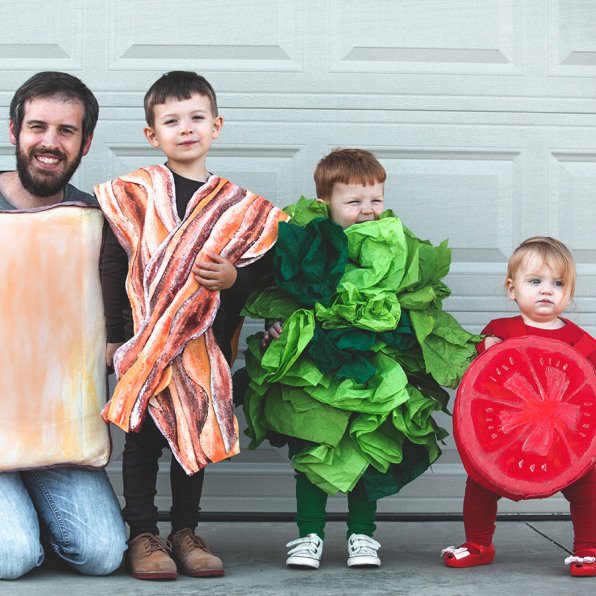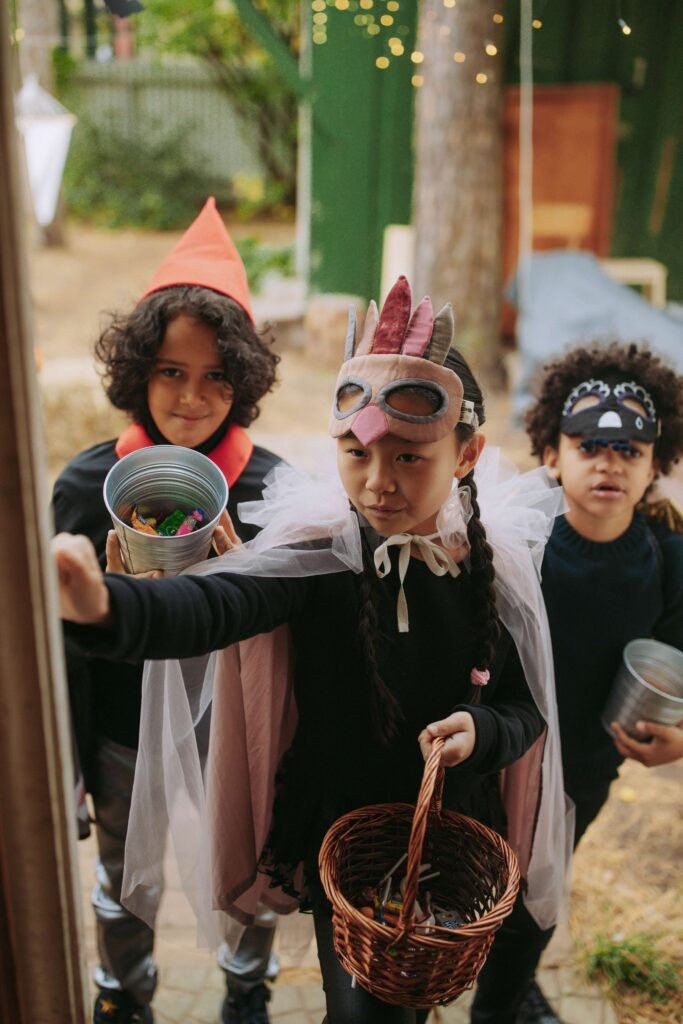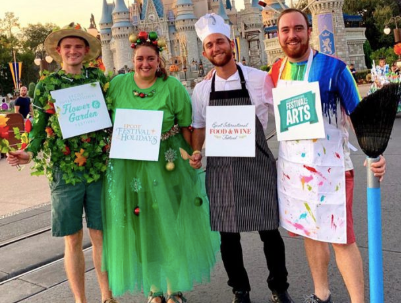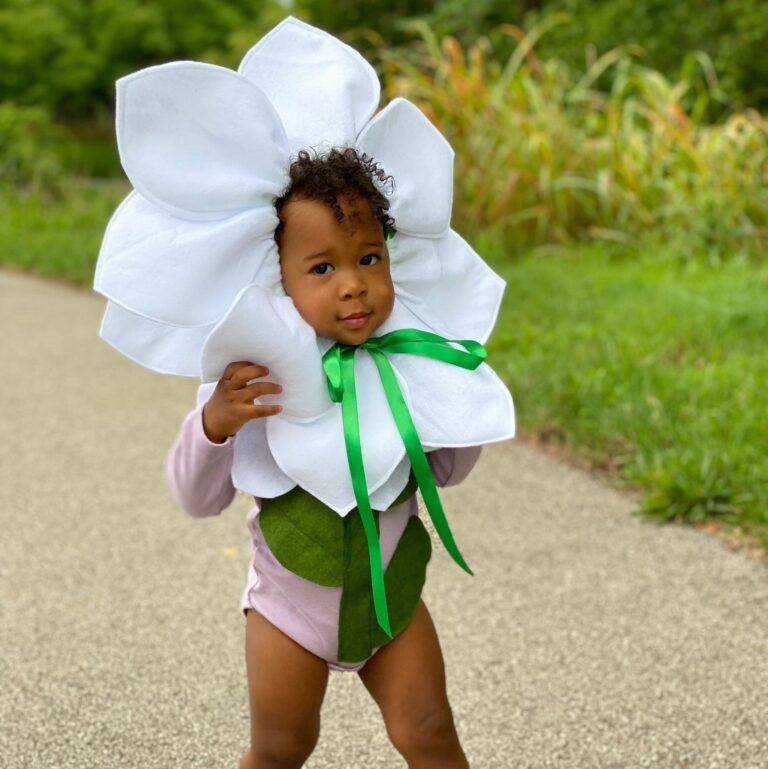Eco-Friendly Costumes for a Greener Future
Imagine a world where creativity meets sustainability, where Halloween costumes not only make a statement but also make a positive impact on our planet. You have the power to transform this vision into a reality with eco-friendly costumes for a greener future. In this article, we will explore the exciting realm of sustainable costumes, discussing their importance, benefits, and how you can effortlessly incorporate them into your costume collection.
As we become more aware of the environmental challenges we face, it is crucial to find innovative ways to reduce our carbon footprint. From plastic waste to harmful chemicals, traditional costumes often contribute to the deterioration of our planet. However, eco-friendly costumes offer a solution to this problem by embracing sustainable materials and ethical practices. By choosing these costumes, you not only showcase your own sense of style but also make a conscious choice to protect our environment.
Throughout this article, we will guide you through the fascinating world of sustainable costumes. From highlighting the materials used in crafting these eco-conscious outfits to providing tips on finding or creating your own, we aim to equip you with the knowledge and inspiration needed to embark on this journey towards a greener future. So, get ready to take your Halloween costumes to the next level and join the movement towards a more sustainable future!
Eco-Friendly Costumes for a Greener Future
Introduction to Eco-Friendly Costumes
When it comes to costumes, we often focus on the fun and creativity that comes with dressing up. However, it’s important to consider the environmental impact that our costumes can have. The fashion industry is known for its contribution to pollution and waste, and costumes are no exception. By choosing eco-friendly costumes, we can make a positive impact and work towards a greener future.
Understanding the Importance of Sustainability in Costumes
Sustainability is all about meeting the needs of the present without compromising the ability of future generations to meet their own needs. When it comes to costumes, this means making choices that are mindful of the environmental, social, and economic impacts. By opting for sustainable costumes, we can reduce waste, conserve resources, and support ethical practices in the industry.
Exploring the Negative Environmental Impact of Traditional Costumes
Traditional costumes often rely on synthetic materials, such as polyester and nylon, which are derived from fossil fuels and require a significant amount of energy and water to produce. The production process also releases harmful chemicals into the air and waterways, contributing to pollution. In addition, the fast fashion culture encourages disposable costumes that are worn once and then discarded, further contributing to waste. By choosing eco-friendly alternatives, we can mitigate these negative impacts.
Choosing Sustainable Fabrics
Introduction to Sustainable Fabrics
One of the key ways to make costumes more eco-friendly is by choosing sustainable fabrics. Sustainable fabrics are made from renewable resources and are produced using environmentally friendly processes. These fabrics are often biodegradable, require less water and energy to produce, and have a lower carbon footprint compared to their traditional counterparts.
Organic Cotton
Organic cotton is grown without the use of synthetic pesticides or genetically modified organisms (GMOs). It requires less water to produce compared to conventional cotton and promotes healthier soil and water quality. Organic cotton is a versatile fabric that can be used for various costume elements, from clothing to accessories.
Hemp
Hemp is a highly sustainable fabric that requires minimal water and no pesticides to grow. It is one of the strongest natural fibers and is known for its durability. Hemp can be used for costumes that require sturdy and long-lasting materials, such as jackets, hats, or bags.
Recycled Polyester
Recycled polyester is made from post-consumer plastic bottles or textile waste. By diverting these materials from the landfill, recycled polyester helps to reduce waste and conserve resources. It has similar properties to traditional polyester but with a lower environmental impact. Recycled polyester can be used for a wide range of costume elements, including garments and accessories.
Bamboo
Bamboo is a fast-growing plant that requires no pesticides or fertilizers to grow. It is also naturally antibacterial and moisture-wicking, making it a great choice for costumes that require breathability and comfort. Bamboo fabric can be used for clothing, as well as accessories like hats or scarves.
Linen
Linen is made from the fibers of the flax plant and is known for its strength and durability. It requires less water and pesticides compared to other crops, making it an eco-friendly choice. Linen can be used for costumes that require lightweight and breathable fabrics, such as shirts or skirts.
Tencel
Tencel, also known as lyocell, is a fabric made from wood pulp. The production process of Tencel is environmentally friendly, as it uses a closed-loop system that recycles solvents and minimizes waste. Tencel is a versatile fabric that can be used for various costume elements, from dresses to accessories like bags or headbands.
Upcycled Materials
Upcycled materials are often sourced from discarded fabrics or clothing and transformed into new products. By repurposing these materials, we can reduce waste and give them a new life. Upcycled materials can be used for a wide range of costume elements, offering a unique and sustainable option for outfits.

This image is property of images.fastcompany.net.
DIY Costume Ideas
Using Reusable and Recycled Materials
One of the easiest ways to create eco-friendly costumes is by using reusable and recycled materials. Instead of buying new fabric, consider repurposing old clothes, bed sheets, or curtains to create your costume. Get creative and think outside the box – a colorful bedsheet can easily become a flowing cape or a dress, while old t-shirts can be turned into masks or accessories.
Upcycling Old Clothes
If you have old clothes that you no longer wear, why not transform them into a costume? You can add embellishments, paint, or modify the garments to fit your desired character or theme. By upcycling old clothes, you not only save money but also reduce the demand for new clothing and prevent usable textiles from ending up in landfills.
Natural Dyes and Plant-based Materials
To add a unique touch to your eco-friendly costume, consider using natural dyes and plant-based materials. Natural dyes can be made from plants, fruits, or vegetables, and are free from harmful chemicals. You can experiment with different colors and create your own unique shades. Additionally, consider incorporating natural materials like leaves, flowers, or twigs into your costume for a touch of nature.
Renting and Borrowing
The Rise of Costume Rental Services
In recent years, costume rental services have gained popularity as a more sustainable alternative to buying new costumes. These services allow you to rent high-quality costumes for a fraction of the cost of purchasing them. By renting costumes, you can enjoy the fun of dressing up without contributing to waste or clutter in your wardrobe.
Benefits of Renting or Borrowing Costumes
Renting or borrowing costumes offers several benefits. Firstly, it reduces waste by reusing costumes instead of buying new ones. It also saves money, as renting is often more affordable than purchasing costumes that are only worn once or twice. Additionally, costume rental services often offer a wide range of options, allowing you to choose from a variety of characters or themes.
Finding Local Costume Rental Shops
To find local costume rental shops, you can start by searching online directories or asking for recommendations from friends or family. Some costume rental shops may specialize in specific themes or time periods, so it’s always a good idea to call ahead and check if they have the costume you’re looking for. Supporting local businesses not only helps the environment but also contributes to the local economy.

This image is property of gradesofgreen.org.
Shopping Second-Hand
Thrift Stores and Consignment Shops
Thrifting is a great way to find unique and affordable costumes while reducing your environmental impact. Thrift stores and consignment shops offer a wide range of clothing and accessories, perfect for creating one-of-a-kind costumes. By shopping second-hand, you give these items a new lease on life and prevent them from ending up in the landfill.
Online Platforms for Second-Hand Costumes
In addition to physical stores, there are also online platforms dedicated to second-hand costumes. These platforms allow individuals to buy and sell costumes, making it easy to find pre-loved outfits for your next event. Make sure to read the descriptions and look at the photos carefully to ensure the costume meets your requirements.
Tips for Buying Second-Hand Costumes
When buying second-hand costumes, it’s important to consider a few tips. Firstly, check the condition of the costume and look for any signs of wear or damage. Ensure that the costume fits well and is comfortable to wear. Lastly, don’t be afraid to get creative and make alterations to the costume to personalize it for your needs.
Supporting Ethical Brands
Introduction to Ethical Fashion
When it comes to costumes, supporting ethical fashion brands can make a difference. Ethical fashion focuses on promoting fair labor practices, reducing environmental impact, and prioritizing transparency in the supply chain. By choosing costumes from ethical brands, you can ensure that your outfit has been produced ethically and sustainably.
Sustainable Costume Brands
There are a growing number of sustainable costume brands that prioritize eco-friendly materials and ethical production processes. These brands often offer high-quality costumes made from sustainable fabrics and ensure fair treatment of workers throughout the supply chain. When purchasing from sustainable costume brands, you can be confident that your costume aligns with your values.
Researching Ethics and Transparency
Before purchasing from a brand, it’s important to do some research regarding their ethics and transparency. Look for brands that provide information about their sustainability practices, such as their choice of fabrics or certifications they hold. Additionally, check if the brand has any fair trade or ethical certifications, which can provide further assurance of their ethical practices.

This image is property of mickeyblog.com.
Avoiding Single-Use Costumes
The Problem of Fast Fashion
The fast fashion industry is known for its high production rates and short lifespan of garments. Many costumes fall into the category of single-use garments, worn once or twice and then discarded. This contributes to waste and pollution, as these costumes often end up in landfills. By avoiding single-use costumes and opting for sustainable alternatives, we can reduce our impact on the environment.
Promoting Minimalism and Capsule Wardrobes
Promoting minimalism and capsule wardrobes is another way to avoid single-use costumes. Instead of buying multiple costumes for different occasions, consider investing in versatile pieces that can be repurposed or styled differently for various events. By adopting a minimalist approach, we can create a more sustainable and intentional wardrobe.
Transforming Costumes into Everyday Wear
Instead of relegating costumes to the back of the closet after Halloween or a themed event, why not incorporate them into your everyday wear? Get creative and find ways to style costume pieces into your regular outfits. For example, a cape can become a stylish accessory for a winter coat or a unique top for a night out. By extending the lifespan of your costumes, you reduce waste and maximize their use.
Eco-Friendly Costume Accessories
Sustainable Makeup and Face Paint
When it comes to costumes, accessories often include makeup and face paint. Opt for sustainable options that are free from harsh chemicals and toxins. Look for brands that use natural and organic ingredients, such as plant-based pigments and biodegradable glitter. By choosing sustainable makeup and face paint, you can ensure that your costume is not only visually appealing but also in line with your eco-friendly values.
Biodegradable Glitter and Sequins
Traditional glitter and sequins are made from microplastics, which can be harmful to the environment. Luckily, there are now biodegradable alternatives made from plant-based materials that break down naturally. These eco-friendly options allow you to shine and sparkle without compromising the planet.
Sustainable Wig Options
If your costume requires a wig, consider choosing a sustainable option. Look for wigs made from natural fibers like human hair, organic cotton, or plant-based materials. These wigs are often more durable and can be reused for future costumes or events. Additionally, consider donating your wig once you are done with it, allowing someone else to enjoy it and reducing waste.

This image is property of images.squarespace-cdn.com.
Donating and Recycling Costumes
Donating Used Costumes
After you’ve worn a costume and no longer have use for it, consider donating it to someone in need. There are numerous organizations and initiatives that accept used costumes and distribute them to children or individuals who may not have the means to buy new costumes. By donating your costumes, you give them a second life and bring joy to someone else.
Recycling Costume Materials
If your costume is beyond repair or cannot be donated, consider recycling the materials. Check if there are any textile recycling programs or drop-off locations in your area that accept fabric scraps or old costumes. By recycling costume materials, we can reduce the amount of waste that ends up in landfills and promote a circular economy.
Organizations and Programs for Costume Recycling
Some organizations and programs focus specifically on costume recycling. They collect and repurpose old costumes, either by refurbishing them for future use or transforming them into new products. Consider supporting these initiatives by donating your costumes or purchasing from them when in need of a new costume. By choosing costume recycling, we contribute to a more sustainable and circular fashion industry.
Educating and Inspiring Others
Promoting Sustainability in Schools and Communities
Education plays a crucial role in fostering a greener future. By promoting sustainability in schools and communities, we can raise awareness and inspire others to make eco-friendly choices, including when it comes to costumes. Encourage schools and community organizations to incorporate sustainability lessons, workshops, or events that highlight the importance of eco-friendly costumes.
Eco-Friendly Costume Workshops and Events
Hosting eco-friendly costume workshops and events can be a fun and interactive way to educate and inspire others. These workshops can teach participants how to create sustainable costumes using reusable materials, natural dyes, or upcycled fabrics. Additionally, organizing eco-friendly costume contests or fashion shows can showcase the creativity and impact of sustainable costumes.
Sharing Sustainable Costume Ideas on Social Media
Social media platforms offer an excellent opportunity to share sustainable costume ideas and inspire others. Create posts or videos showcasing eco-friendly costume DIYs, thrifted finds, or sustainable brands. Engage with your audience by encouraging them to share their sustainable costume creations or tips. By spreading the word and sharing sustainable ideas, we can collectively work towards a greener future.
In conclusion, incorporating eco-friendly practices into our costume choices can make a significant impact on the environment. By choosing sustainable fabrics, creating DIY costumes, renting or borrowing, shopping second-hand, supporting ethical brands, avoiding single-use costumes, opting for eco-friendly accessories, donating and recycling costumes, and educating and inspiring others, we can pave the way for a greener future. So, the next time you’re planning a costume, let’s embrace sustainability and make a positive change in the world.






